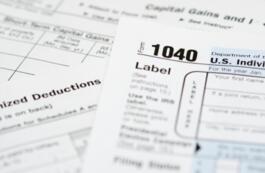And They Wonder Why Voters Are Angry
A Commentary By Scott Rasmussen
As Mitt Romney assumes the role of presumptive Republican nominee, polls suggest a competitive general election matchup between the former Massachusetts governor and President Obama. Typically, both candidates poll in the mid-40s, while 10 to 12 percent remain uncommitted to either side.
Among these uncommitted voters, Rasmussen Reports polling shows that just 22 percent approve of the way the president is handling his job. Seventy-two percent (72 percent) disapprove. As for intensity, just 2 percent strongly approve, and 40 percent strongly disapprove.
At first glance, this seems like good news for Romney. These uncommitted voters will be difficult for the president to win over. But it raises another question: If these uncommitted voters are so unhappy with the president, why aren't they already Romney supporters?
The data suggest that voters are less than thrilled with the choices they'll have in November. The lack of enthusiasm for Romney among GOP voters has been well documented. Among Democrats, enthusiasm for their candidate is noticeably down, as well. Among young voters, for example, just 20 percent strongly approve of the job the president is doing.
Most young voters, of course, will still end up voting for the president just as most disgruntled Republicans will end up voting for Romney. But neither candidate connects well with white working-class voters. Romney has struggled to win over these voters in his primary contests, and Obama lost them to Hillary Clinton in the 2008 Democratic primaries. For many, Election 2012 is shaping up to be another choice between the lesser of two evils.
One reason can be found in the issue that stirred more political passion than any other over the past four years. The bailouts remain the most hated pieces of legislation in recent American history. They spurred both the tea party and the Occupy movements and convinced millions that a corrupt relationship exists between big government and big business. But both Romney and Obama are supporters of the bailouts. Given the public mood, it is almost beyond comprehension that neither party could come up with a presidential candidate opposed to the bailouts.
Looking ahead, most voters hear a lot of rhetoric about deficit reduction but don't believe either party has proposed a serious plan to stop ever-increasing government spending. Most don't even believe that the budget cuts agreed to during the debt ceiling debacle will ever be implemented. Politicians have spent years trying to blame voters for this problem, but my book "The People's Money" shows that voters are far more willing than their politicians to make the hard choices.
The disconnect can be found on other major issues, as well. On national security matters, GOP Congressman Paul Ryan's budget calls for cutting everything but defense spending, a position shared by just a third of voters. The president wants to trim the military budget but expand U.S. intervention into a growing list of countries. But 75 percent reject that approach and believe U.S. troops should be deployed abroad only when vital national security interests are at stake. Half of the nation's voters are even ready to follow President Eisenhower's advice and bring home U.S. troops from Western Europe and Japan.
There are certainly differences between Obama and Romney. People will find plenty of valid reasons to select one over the other. But if the winner of Election 2012 governs as he campaigns, the disconnect will continue, and voters will grow even angrier.
COPYRIGHT 2012 SCOTT RASMUSSEN
DISTRIBUTED BY CREATORS.COM
See Other Political Commentaries.
See Other Commentaries by Scott Rasmussen
Rasmussen Reports is a media company specializing in the collection, publication and distribution of public opinion information.
We conduct public opinion polls on a variety of topics to inform our audience on events in the news and other topics of interest. To ensure editorial control and independence, we pay for the polls ourselves and generate revenue through the sale of subscriptions, sponsorships, and advertising. Nightly polling on politics, business and lifestyle topics provides the content to update the Rasmussen Reports web site many times each day. If it's in the news, it's in our polls. Additionally, the data drives a daily update newsletter and various media outlets across the country.
Some information, including the Rasmussen Reports daily Presidential Tracking Poll and commentaries are available for free to the general public. Subscriptions are available for $4.95 a month or 34.95 a year that provide subscribers with exclusive access to more than 20 stories per week on upcoming elections, consumer confidence, and issues that affect us all. For those who are really into the numbers, Platinum Members can review demographic crosstabs and a full history of our data.
To learn more about our methodology, click here.






